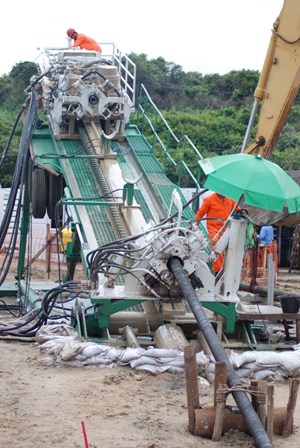DNV GL Publishes New HDD Standard for Pipelines
(UC) — Oslo-based technical advisor DNV GL said it has published a new standard that reduces risk and improves quality of site investigation, engineering, planning and installation of pipelines using horizontal directional drilling (HDD).
The new standard, DNVGL-ST-F121, was created through a joint industry project (JIP) and provides a series of minimum requirements and best practice for all phases, from site investigation, engineering and planning to execution of pipeline installation to reduce the risk associated to HDD crossings.
“DNV GL brought together a multi-disciplinary group of experts that resulted in a new standard that has established clear parameters, limits and criteria for essential issues related to HDD projects,” said Frank Ketelaars, regional manager, Americas, DNV GL – Oil & Gas. “We are confident that this standard will bring long-term benefit to HDD operations, reducing risk and improving quality,”
The use of HDD installation techniques has grown significantly over the last decades. The 21st annual Underground Construction magazine HDD survey estimated in 2019 that contractors expected HDD to be applied to nearly half (47%) of their projects. However, HDD crossings are complex in nature and always challenging.
It is common to face problems during execution with significant impact on cost and schedule. The best way to overcome this is to ensure a proper investigation, engineering, planning and execution of all drilling-related activities.
Additionally, there are currently no methods for in situ repair of damaged pipelines installed by HDD, which makes it even more important to ensure the quality of pipeline design, construction and installation.
The earlier potential risks and problems are identified in an HDD project, the better for the delivery of the project.
All these challenges led to a joint industry project to consolidate the knowledge and experience of HDD. Operators, EPC companies and drilling contractors were brought together for the first time, addressing not only the borehole stability and the drilling activities perspective but also the aspects related to the pipeline integrity as well.
Related News
From Archive

- Glenfarne Alaska LNG targets late-2026 construction start for 807-mile pipeline project
- U.S. water reuse boom to fuel $47 billion in infrastructure spending through 2035
- $2.3 billion approved to construct 236-mile Texas-to-Gulf gas pipeline
- Major water pipe break in Puerto Rico hits over 165,000 customers
- Potomac River Tunnel project enters construction phase beneath Washington, D.C.
- Pennsylvania American Water launches interactive map to identify, replace lead water service lines
- Trump's tariffs drive $33 million cost increase for Cincinnati sewer project
- Utah city launches historic $70 million tunnel project using box jacking under active rail line
- Tulsa residents warned after sewer lines damaged by boring work
- Fatal trench collapse halts sewer construction in Massachusetts; two workers hospitalized




Comments